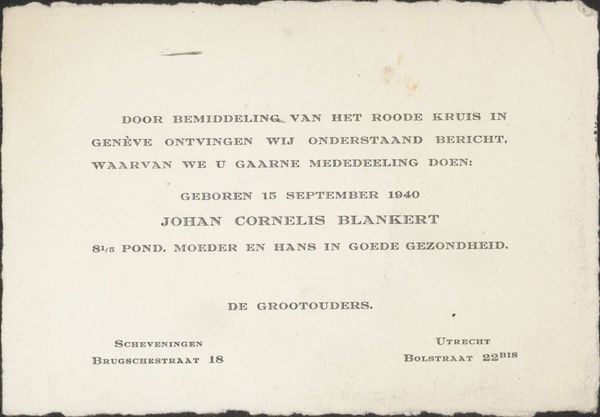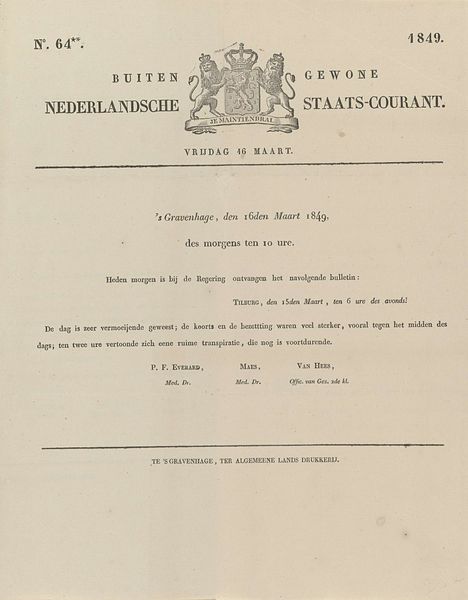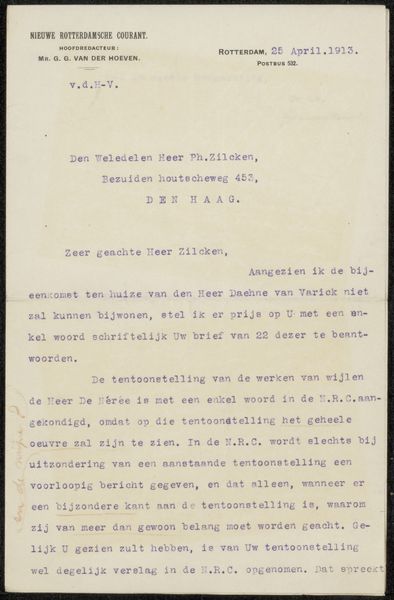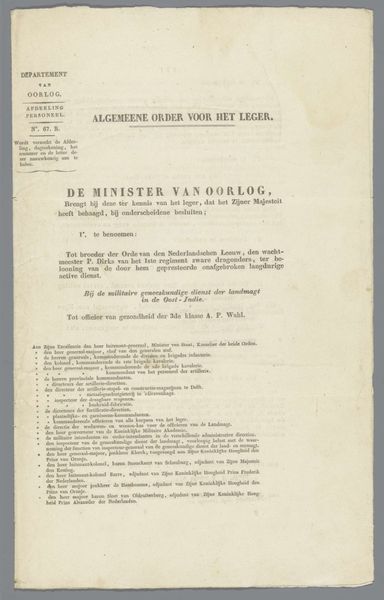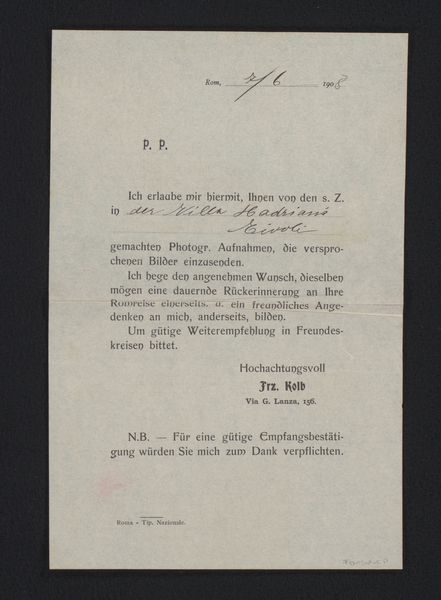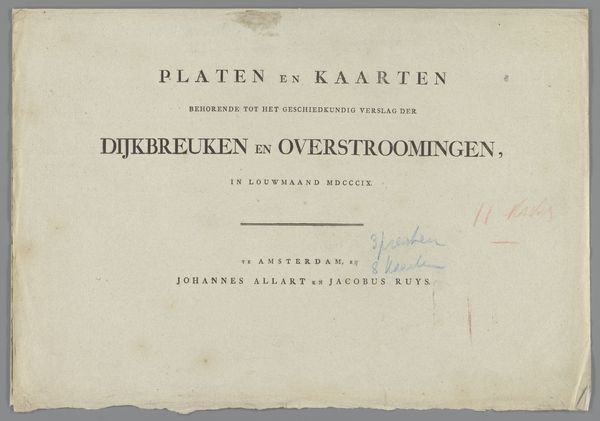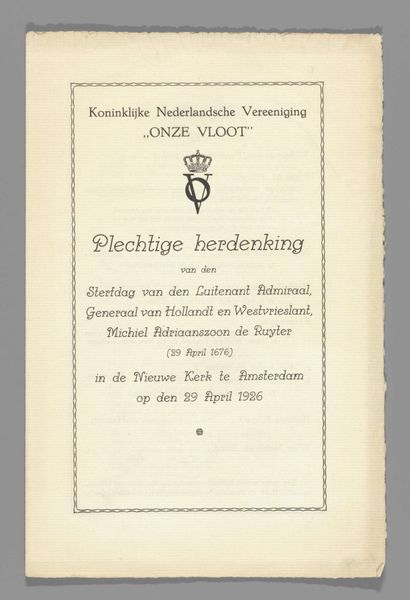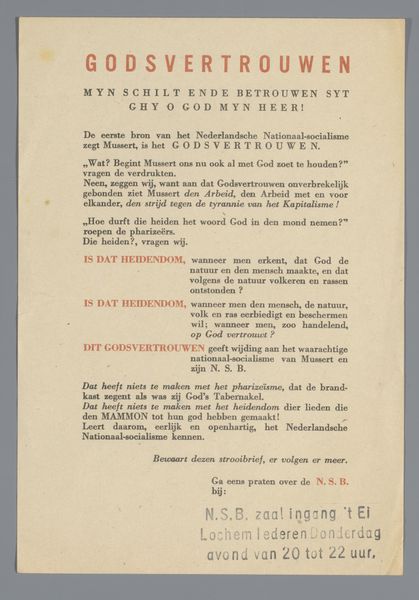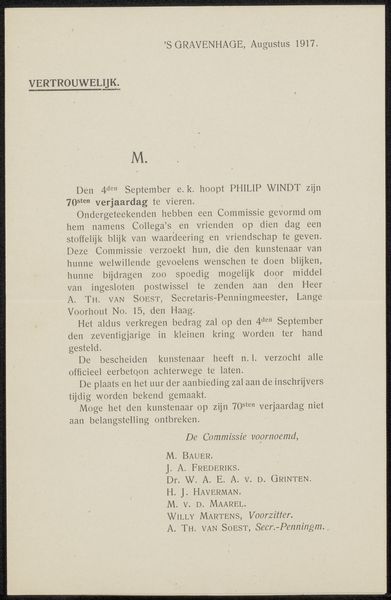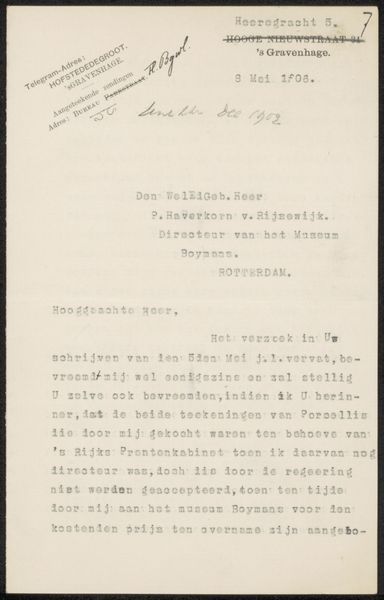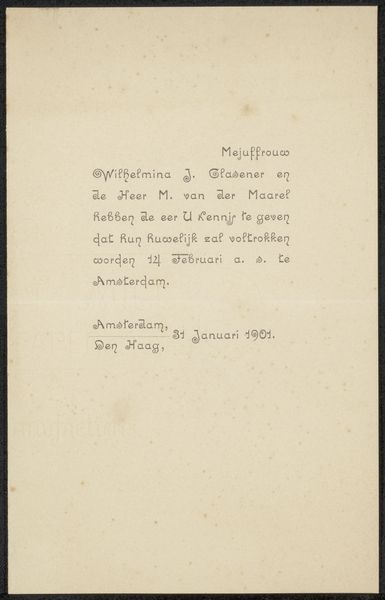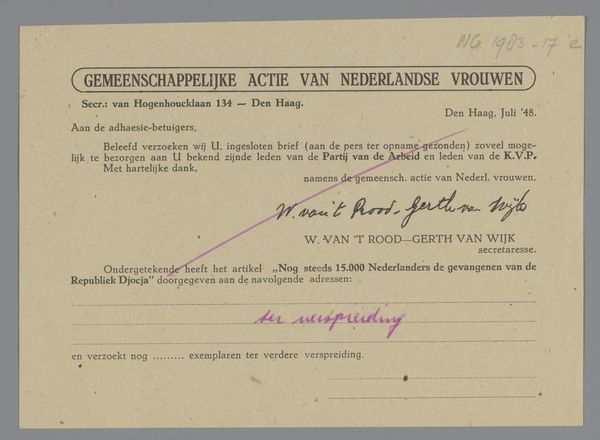
Lijst van Inteekenaren op eene Chromolithographische Afbeelding van den Gecostumeerden Optogt te houden door de leden van het Delftsche Studenten-corps in de maand Julij 1862 1862
0:00
0:00
anonymous
Rijksmuseum
graphic-art, print, typography, poster
#
graphic-art
#
dutch-golden-age
# print
#
typography
#
poster
Dimensions: height 345 mm, width 215 mm
Copyright: Rijks Museum: Open Domain
Curator: This intriguing poster, "Lijst van Inteekenaren op eene Chromolithographische Afbeelding van den Gecostumeerden Optogt te houden door de leden van het Delftsche Studenten-corps in de maand Julij 1862," was created anonymously to advertise a student event. It dates back to 1862 and is currently held at the Rijksmuseum. Editor: My first impression is of a document that aspires to something grand, yet has a certain bare-bones, official quality, almost like a proclamation. I notice the prominent typography and how the space is allocated for potential subscribers to write their names, offering a promise that there will be something spectacular, even something historical, worth putting your name behind! Curator: Precisely! It provides context. The Delftsche Studenten-corps were promoting a "gecostumeerden optogt," which translates to a costumed procession. It was in celebration of the fourth lustrum – a significant anniversary – of the Koninklijke Akademie, what later becomes the Delft University of Technology. It highlights not just the revelry but the academic and social importance of such events in the students’ lives, connecting the local to much larger conversations. Editor: I'm captivated by the reference to "Het Gezantschap van den Sultan van Achin." Achin is a region in modern day Indonesia. The poster alludes to portraying a delegation from this sultanate to Prince Maurits van Nassau dating back to 1602! It seems the procession was re-enacting significant events, casting students in various roles. This suggests an early consciousness about global politics, colonialism, trade, and even Orientalism, all through the lens of student pageantry. Curator: Right, it demonstrates an interesting dynamic. Student associations historically were incubators of cultural values. This event clearly played a part in promoting ideas of Dutch nationalism, celebrating their heritage, while reinterpreting historical narratives. How aware they were of all implications can be debated, of course, but events such as this are never only ‘fun.’ Editor: I agree. A single document can speak volumes. In a way, the image reminds me of the illuminated manuscripts from Medieval and Renaissance Europe that serve to inform and perpetuate a common ideology. A poster like this offers not just a listing of people, but a glimpse into shared values and perspectives held at a specific place and time, an era with all its particular convictions and convictions of error. Curator: This piece serves as a snapshot of Dutch academic life in the 19th century. Editor: It tells a deeper, untold narrative. It allows for examination of power dynamics within colonial historical consciousness through symbols and performative culture.
Comments
No comments
Be the first to comment and join the conversation on the ultimate creative platform.
